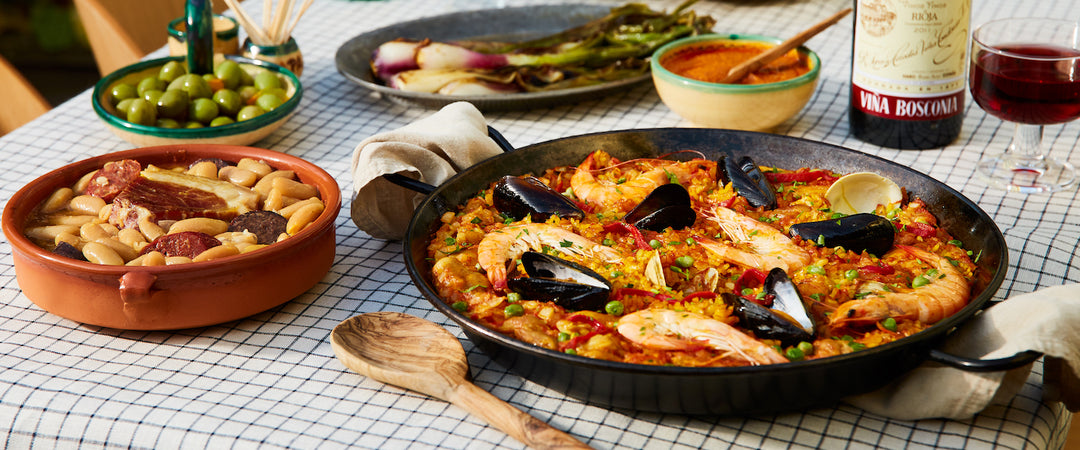March 2024 Blanco-Y-Tinto Wine Club
 |
Bodegas Arautava 2022 Valle De La Orotava Listan BlancoRegular Price: $28.99
Club Price: $24.64
|
I have waited for the moment when I can open a wine writeup with Shakespeare. That moment has come: “But i’faith you have drunk too much Canaries; and that’s a marvellous searching wine, and it perfumes the blood ere one can say ‘Wat’s this?” (Henry IV). The “Canaries” that The Bard refers to are wines from the Canary Islands, and this month's Blanco is from there - from the Island of Tenerife to be exact.
Viticulture here dates back to plantings by Portuguese and Spanish explorers in 1497. As impressive as Tenerife’s 500 years of winegrowing tradition is, it's overshadowed by the massive volcano that dominates the island. It visually dominates the landscape, and gives rise to the island’s lean volcanic soil, making for one of the world’s more unique ‘terroirs’.

Harsh winds off the Atlantic often sweep the island, creating the need to train the vines into thick braided cordons to withstand the force of the elements - a technique brought by imported Portuguese workers during the Conquista of Tenerife by the Castilian Crown in the 17th century. The braiding technique also extends vine runner length, which is important for Malvasia, the dominant grape at the time, which is still planted widely today.

The winery Bodegas Arautava sits in the middle of the Orotava valley, an area of Tenerife that Google succinctly describes as a “lush, sea-adjacent plateau brimming with palm & banana trees & historic Canarian architecture.” It’s a gentle downward slope from the volcano’s flanks towards the blue of the Atlantic, lush and green, with a mild climate.
Bodegas Arautava doesn’t quite date back to the time of the first settlers, but they are in their third generation of production. Most of the work is done manually, with both vineyard tending and winemaking a family affair. They produce a wide variety of wines, including a style they call “vinos historicos” made in the style mentioned by Shakespeare - sweet Malvasia-based wines, that, far as we know, don’t even make it stateside.
The wine we can bring you this month is from the ‘village wine’ series. The Listan Blanco grapes are sourced from the Palo Blanco and Cruz Santa areas, from vineyards with ungrafted (pre-phylloxera) roots, trained in the braided cordon system shown above. The aim here was to marry the minerality of the volcanic soils at 700m above sea level with the “kiss of the Atlantic breeze”, and they succeeded.
Fun fact: Listan Blanco is actually the same grape as Palomino (the famous sherry grape). It expresses itself freely here; a lush saline minerality with white fruit and grapefruit-pith freshness on the palate is every bit Palomino. At first the nose is a surprise - slightly reductive, almost diesel-y, like an aged Riesling, prompting my teenage son to describe it as a ‘hint of fresh asphalt after it rains’. This nose is well integrated with the palate, where the very mild sulfury note melds with the fruit, giving the wine a pleasant pseudo-smokiness. It’s ever so mildly funky, but it works. And, as if to give you 2 wines in 1, if you leave the bottle open for a day that note completely dissipates, like the plume of a volcano - here today, gone tomorrow. Both versions of the wine are lovely and I would take sip after sip, enjoying layers of flavor and the lively mineral mouthfeel. It’s both a solo sipper and a great food wine and was pure delight with a freshly prepared tortilla espanola with DO Piquillos. - BMS
 |
Quinta Vale D Maria Vinhas Do Sabor RedRegular Price: $23.99
Club Price: $20.39
|
There is nothing better than tasting a wine that makes you feel like the exploding head emoji 🤯. My mind was certainly blown when I tasted the Vinhas do Sabor from producer Vale D. Maria. It checked all the boxes for me (balance, length, intensity, and most importantly complexity.) How can a wine be this good? It was a question that stayed with me long after I tasted it. This was the third Portuguese red I had the pleasure of tasting, and it just amazes me how Portugal makes some of the most underrated dry wines (leaving aside their famous fortified wine, Port.) So what’s the secret?
Quinta Vale do Sabor is located along the sinuous Sabor River in a closed-off valley in the Douro Superior subregion. Indigenous grape varieties Touriga Franca, Touriga Nacional, Tinta Roriz, Alicante Bouschet and Baga are all interplanted along east-facing slopes. They hand-pick and de-stem the grapes before using the centuries-old foot-trodding method to gently crush the grapes in granite largares (troughs). The grapes ferment for 7-10 days in stainless steel vats with manual pump-overs before being transferred to used French oak barrels. The wine is then aged for 21 months before the final selection and blending prior to bottling.
So the cat’s out of the bag. What’s the secret that makes Vinhas do Sabor an exceptionally delicious wine? No secret: just terroir, grape growing know-how, vinification skill, thoughtful aging, and careful blending. This blend showcases notes of concentrated red and black fruits (cherry, blackberries and plum), peppercorns, dried rose petals and a hint of menthol and vanilla. On the palate I found it to be very concentrated, intense, and well-balanced with a smooth, long, finish. Think Port if it wasn’t fortified. Quality for value here exceeded my expectations. This is a great example of the Douro producing fine dry red wines alongside sweet fortified Port wine. I would enjoy a 2018 Quinta Vale D Maria Vinhas Do Sabor Red now and hold one to see what surprises it may reveal. Saúde! – AP



